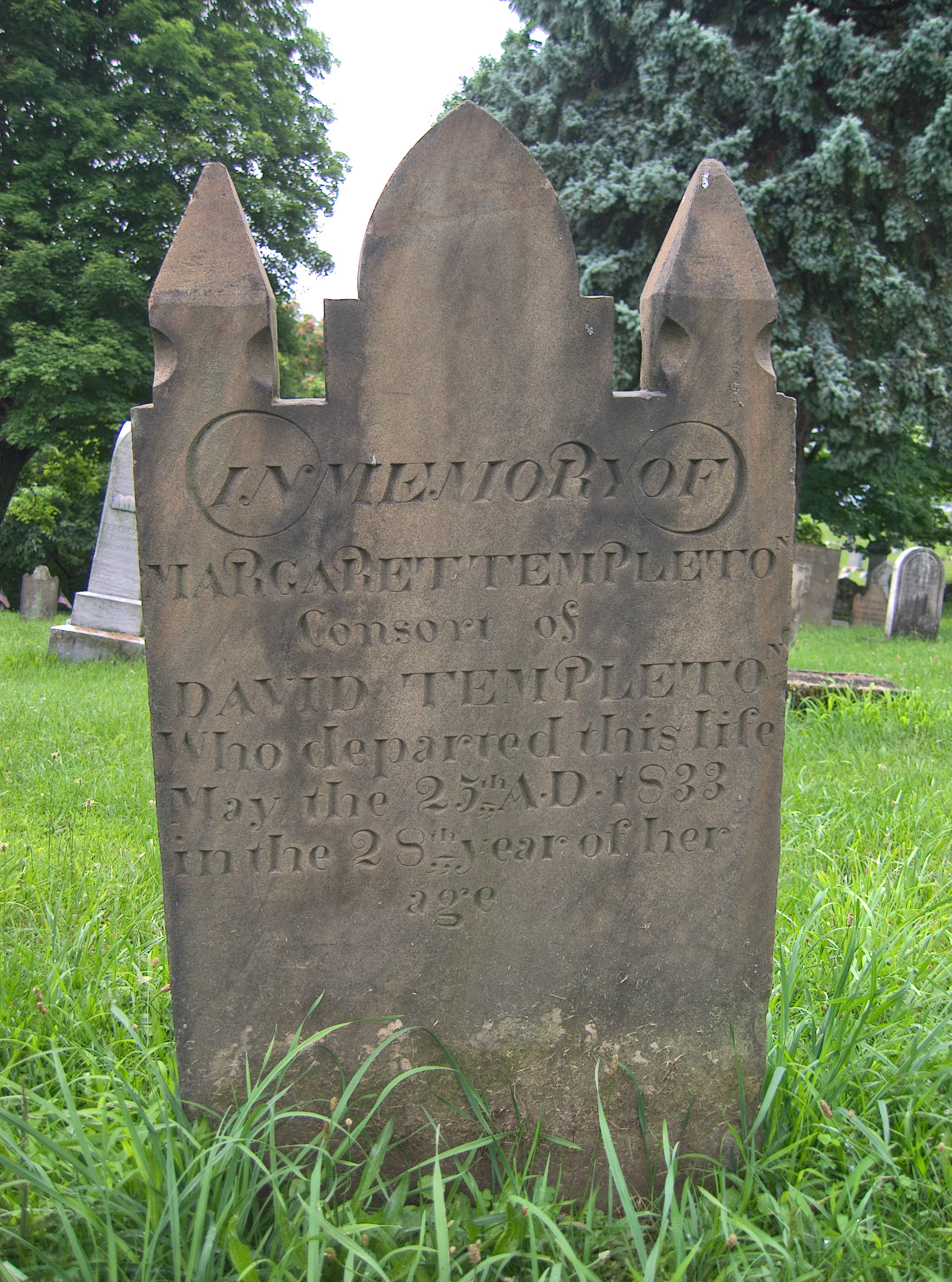
A tombstone from 1817 remembering a father and daughter. Since they have different surnames, it seems likely that the daughter married; but perhaps her husband had no money for a tombstone, and it was not until her father died (he outlived her by eight years) that she had any memorial.
Old Pa Pitt was not able to read the last part of the inscription, but here is what he could read:
In memory of John Reed Esq. who Departed this life April 14th 1817 in the 73d year of his Age——and Cathrine McLean his daug[hter] who died in the 25th year of her Age 1807 they liv’d in peace with the world in love with their [neighbors?] death…
Note the spelling of “Cathrine.” Reeds were among the very earliest settlers in the Canonsburg area; this is probably a branch of that family.
The stonecutter was the craftsman we identify as the Master of the Curly G, who had a wide-ranging practice: stones of his also show up in Robinson Run Cemetery and Union Cemetery (Robinson Township).










